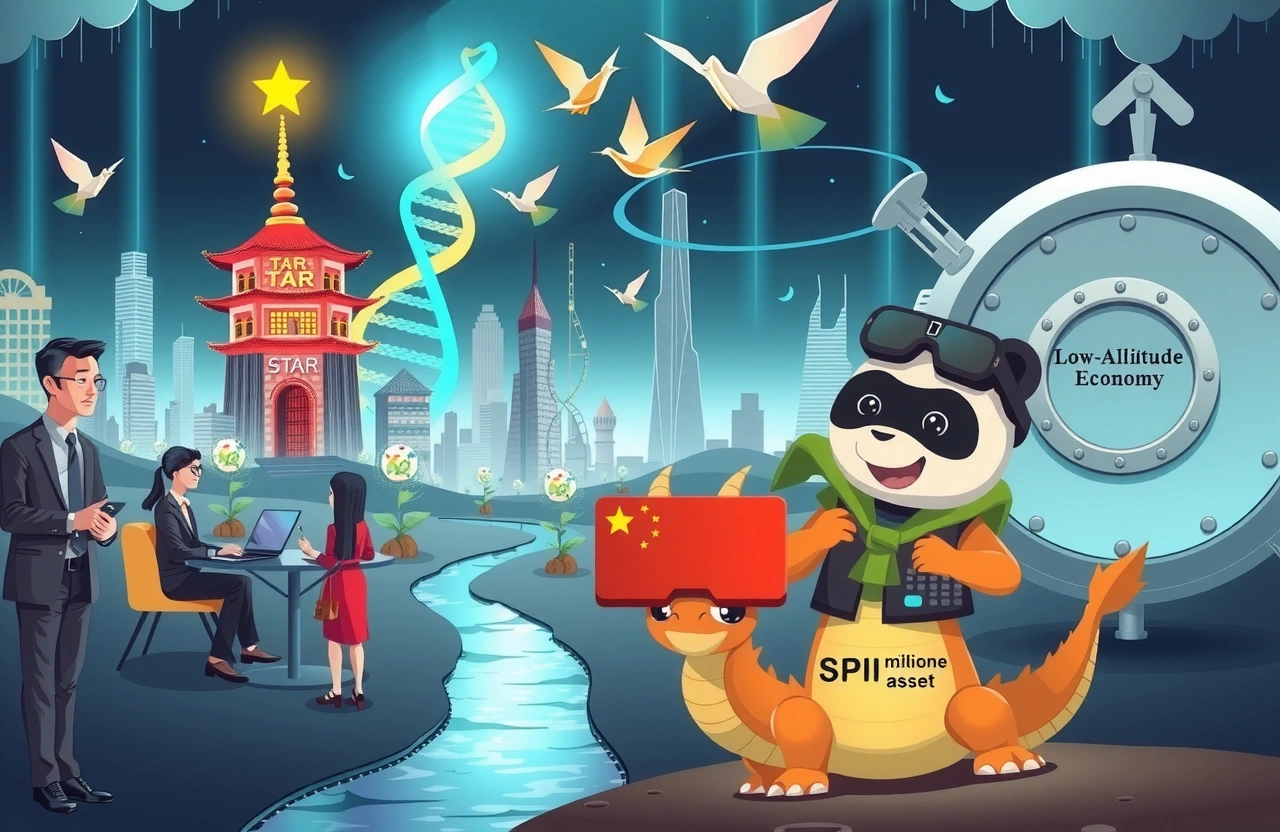Shanghai Stock Exchange trains securities firms on implementing the Science and Technology Innovation Growth Layer, a key reform to support unprofitable tech companies and foster innovation.
Milestone Reform for China’s Capital Markets
The Shanghai Stock Exchange (SSE) recently convened a landmark training session for securities firms, marking a critical step in launching the Sci-Tech Innovation Growth Layer—a specialized market segment designed to accelerate funding for breakthrough technologies. This development represents the most significant structural reform since the STAR Market’s 2019 inception, strategically targeted at venture-stage companies in fields like artificial intelligence, commercial aerospace, and low-altitude economy that operate without current profitability. With 120 securities firms participating and 330+ compliance, technology, and operations specialists in attendance, this synchronized industry mobilization highlights China’s systematic approach to building specialized capital markets. As global technology competition escalates, the SSE showcases remarkable institutional adaptability through this Science and Technology Innovation Growth Layer initiative.
Addressing the Innovation Capital Gap
Chinese tech startups have long faced funding constraints during their R&D-intensive early years when revenue remains elusive. The Science and Technology Innovation Growth Layer directly targets this challenge by allowing qualified companies to list through STAR Market’s newly reactivated fifth listing standard—a pathway specifically designed for commercially validated enterprises lacking immediate profitability. According to SSE officials, 32 existing STAR Market companies automatically qualify for transition to the Growth Layer under published criteria that evaluate technological maturity, market potential, and operational capability regardless of current earnings. This addition perfectly complements existing STAR Market channels by creating a dedicated home for potentially transformative innovators.
Core Architecture of the Growth Layer
The “1+6” regulatory framework governing the Science and Technology Innovation Growth Layer introduces several capital market innovations:
– Senior Professional Institutional Investors (SPII): Verified expert investors gain privileged access
– IPO Pre-Review Mechanism: Expedited screening for qualified applications
– Enhanced Disclosure Protocols: Technical viability assessments replace profitability requirements
– Dynamic Guidance Framework: Rules evolve alongside emerging technologies
Investor Protection Mechanisms
Balancing market accessibility with risk management remains pivotal to the Science and Technology Innovation Growth Layer design. Securities firms must implement tiered investor qualification systems verifying:
– Minimum financial assets of ¥1 million RMB
– Two years securities trading experience
– Completion of specialized risk education modules
These safeguards ensure market participation aligns with risk tolerance while preventing volatility.
Strategic Industry Implications
Financial institutions unanimously welcomed the reforms. One brokerage compliance head observed: “This closes China’s early-stage funding gap comparable to Nasdaq’s historical role—we’re now equipped to nurture semiconductors, quantum computing and biotech ventures through their valley of death.” Participants highlighted three transformational impacts:
Multiplier Effect on Innovation Ecosystems
The Science and Technology Innovation Growth Layer strengthens the entire research-to-commercialization pipeline. By connecting specialized capital with vetted innovators, it accelerates development cycles while attracting complementary private investment.
Global Competitiveness Enhancement</h3
As U.S. restrictions on technology transfers intensify, this platform provides domestic alternatives for strategic sectors. Several training attendees noted increasing IPO interest from aerospace firms previously reliant on foreign VC networks.
Professionalization Catalysts
The SPII system incentivizes institutions to develop deep technical evaluation capabilities. Technology-focused brokerages like China Securities see this reshaping analyst recruitment toward engineering and hard science credentials.
Operational Requirements for Brokerages
Securities firms face urgent implementation tasks ahead of the September rollout:
Technology System Upgrades
All trading, clearing, and risk monitoring systems require modification to accommodate:
– Growth Layer-specific trading identifiers
– Custom volatility circuit breakers
– SPII permissioning protocols
SSE technology specifications mandate completion by August 20.
Client Education Campaigns
Brokerages must conduct nationwide seminars explaining Growth Layer risks/rewards. Materials emphasize that venture-stage companies carry fundamentally different risk profiles than mature listed firms.
Broader Economic Significance
The timing aligns with China’s national priority for technological self-sufficiency. As SSE Chairman Cai Jianchun emphasized during the training: “This microbial-level support for fundamental research breakthroughs proves financial markets’ adaptability in serving national strategic needs.” The Growth Layer signifies a philosophical shift toward valuation based on intellectual property portfolios rather than quarterly earnings—a conceptual breakthrough reshaping China’s financial infrastructure.
New Productivity Growth Channel
Officials position the Science and Technology Innovation Growth Layer as essential infrastructure for converting technical advances into economic assets. By monetizing patents and prototypes at earlier stages, researchers retain engagement throughout commercialization—addressing China’s historical disconnect between academia and industry.
Securities companies unanimously committed to implementing the framework, acknowledging their frontline role in screening Growth Layer entrants and guiding investor participation. With tailored regulatory allowances for this unique market segment and explicit political backing at national level, successful stabilization could generate replicable models internationally. Financial institutions should immediately prioritize client consultations, system modifications, and the specialized analyst training essential for evaluating frontier technologies—with all preparations targeted for completion before the September 1 operational launch date.



